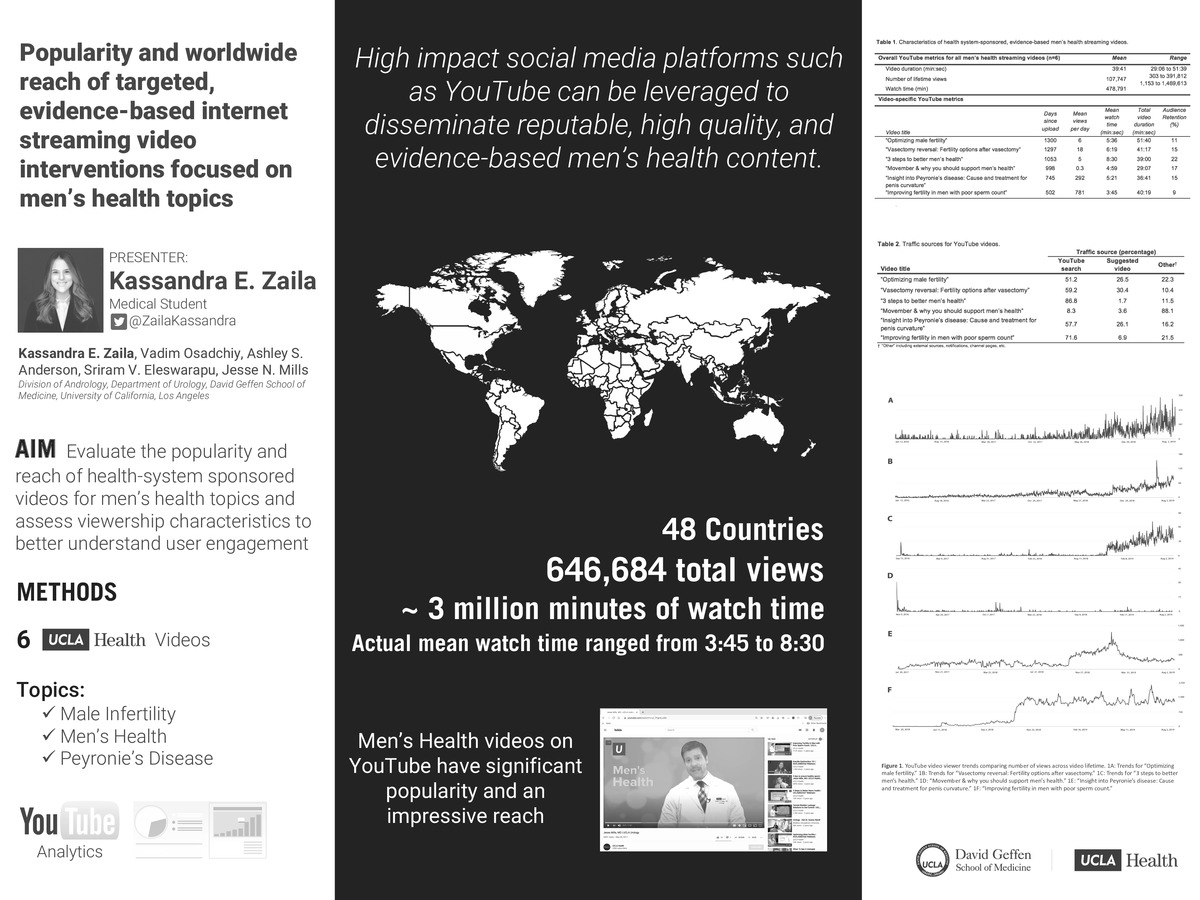-
Author
Kassandra Zaila -
Co-author
Vadim Osadchiy, Ashley Anderson, Sriram V. Eleswarapu, Jesse N. Mills
-
Title
Popularity and worldwide reach of targeted, evidence-based internet streaming video interventions focused on men’s health topics
-
Abstract
Introduction and objectives: Streaming video has become a dominant content-delivery medium, with over 30 million visitors daily to the YouTube platform alone. Videos related to men’s health have proliferated, but content produced by trained healthcare providers remains scarce. We sought to evaluate the popularity and reach of evidence-based men’s health videos that were prepared by a urologist with fellowship training in andrology.
Methods: We identified educational YouTube videos focused on male factor infertility, men’s health, and Peyronie’s disease uploaded during 2016-2018 by a large, university-based health system. All videos featured a board-certified urologist with fellowship training in andrology. Using YouTube’s native analytics tools, we extracted data regarding views, engagement, geographic reach, and viewer demographics through 8/2019.
Results: We obtained data for streaming videos on male infertility (n=3), general men’s health (n=2), and Peyronie’s disease (n=1) (Table 1). Mean video duration was 39 min 41 sec (39:41), total view count was 646,684, and total watch time was 2.9 million min, reaching viewers in 47 countries. 53% of watch time was on a mobile device, 33% on a personal computer. Though video duration ranged from 29:07 to 51:40, actual mean watch time by viewers ranged from 3:45 to 8:30. A video on fertility options after vasectomy had higher female viewership (81.4% female), while a video on optimizing sperm count was viewed overwhelmingly by men (83% male).
Conclusions: As patients increasingly turn to the internet for health information, health systems and physicians may wish to leverage high impact social media platforms such as YouTube to share evidence-based content. Social media analytics tools can provide granular feedback on viewership. Of note, we found gender differences in viewing preferences, and we noted that watch time tended to be <9 min despite video durations >29 min. These data may help content creators with future video design. This study highlights the impressive reach a health system-sponsored video intervention using YouTube can have in sharing accurate video content related to a diverse range of men’s health topics.
Funding: Research Scholar Award from the Urology Care Foundation & American Urological Association.
-
College
AAC
-
Zoom
-
PDF

